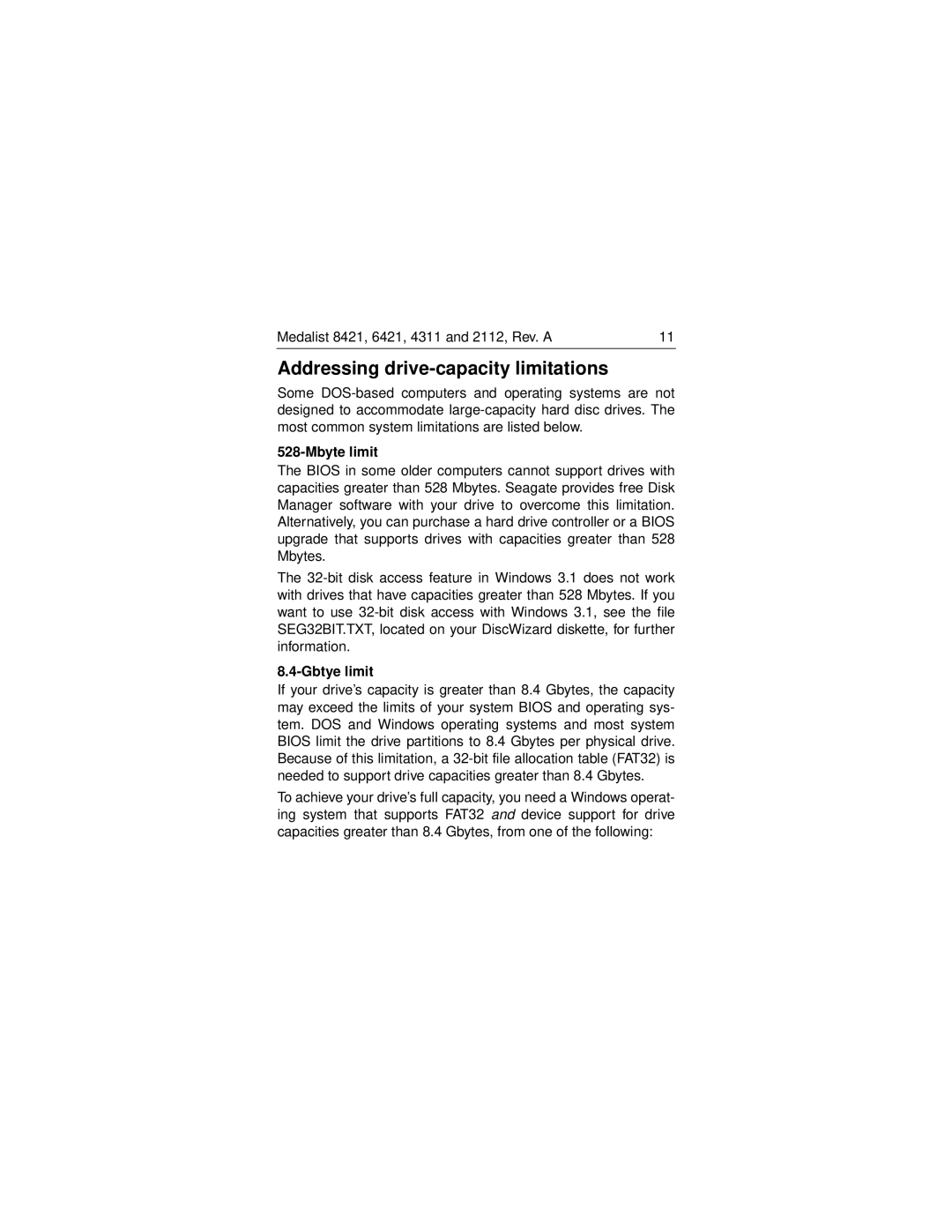Medalist 8421, 6421, 4311 and 2112, Rev. A | 11 |
Addressing drive-capacity limitations
Some
528-Mbyte limit
The BIOS in some older computers cannot support drives with capacities greater than 528 Mbytes. Seagate provides free Disk Manager software with your drive to overcome this limitation. Alternatively, you can purchase a hard drive controller or a BIOS upgrade that supports drives with capacities greater than 528 Mbytes.
The
8.4-Gbtye limit
If your drive’s capacity is greater than 8.4 Gbytes, the capacity may exceed the limits of your system BIOS and operating sys- tem. DOS and Windows operating systems and most system BIOS limit the drive partitions to 8.4 Gbytes per physical drive. Because of this limitation, a
To achieve your drive’s full capacity, you need a Windows operat- ing system that supports FAT32 and device support for drive capacities greater than 8.4 Gbytes, from one of the following:
